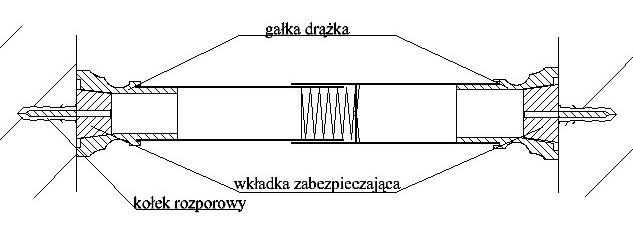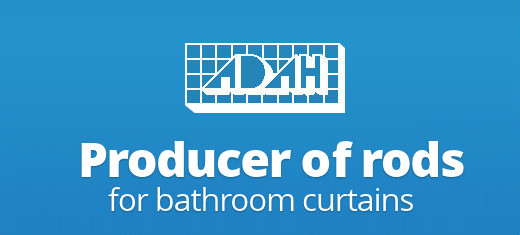Instructions
 1.How to install tension rods
1.How to install tension rods
Generally, bathroom tension rods do not require drilling in the walls and their length can be adjusted within the range determined by the producer, for example: from 70 to 110cm, 105 to 180cm, or 140 to 250cm. The walls between which you want to install the rods have to be parallel.
When mounting the rods, you need to stretch them a few cm more (usually 3 to 5cm – it depends on the length and tension strength of the tension spring inside the rod) than the width between the walls intended to hold the rod. You should place one end of the rod on the place of the wall you chose for the rod. Next, you push the rod towards this place to allow the rod to fit between the walls. When this part of the rod (the knob) is placed in the appointed place, release the rod. Some of the rods (depending on their construction and mounting system) may require twisting around the axis, similarly like the screw. In each of these cases, the producer explains the steps in the included instruction or drawings. If you need to make adjustments, you need to repeat the same steps. Push one end of the rod towards the opposite wall and move to the desired place, then release the rod. In case you stretched the rods too far and you are not able to fit them between the walls, remove the ends from the rod, pull out the thinner rod from the inside of the thicker one until they are separated. After that, insert the thinner rod (the side without the spring) into the thicker rod. Insert the spring into the thicker (wider) rod, and cover with the knobs. The rod is ready for another mounting. Remarks: a good rod with a good blocking system will not let the thinner (smaller diameter) rod to move backwards. From my experience, I found that most complaints (95%) result from the fact that the users do not read the instruction carefully and do not dismantle the rods completely after stretching the rods too wide. They try to push it back without separating the two (thinner and thicker) rods. This will not work, so please, “Do read the instructions!”
2.How to clean the rods to avoid scratches.
Rods that were covered with varnish, anodized or chromed or polished electrochemically and secured with a thin layer of anode can be cleaned with a soft cloth using regular cleaners, such as CIF and CIF –like ones.
Most chrome-like rods are made from pipes formed by heating bands after applying lamination first (you can see the trait of sealing (welding) in the form of line on the outside surface of the rod pipe. In that case, avoid using any aggressive cleaners that may cause scratches. Soft cloth and soap is sufficient. After cleaning, dry off the rod with a dry piece of cloth. After that, it is recommended to polish it with some silicone oil or technical Vaseline to secure the rods against moisture (aluminum oxidation occurrence in the form of white coating or spots). Do not be afraid of buying this type of rods since the surface structure is denser and stronger thanks to applying the lamination process. In common bath conditions, these rods should keep their look for several years.
3.How heavy curtains can the rod hold?
Tension rods for bathroom curtains (as the name indicates) are not for heavy curtains. They can be used to hold curtains not heavier than 1kilogram. However, their resistance of weight is higher and depends on the thickness of aluminum pipes used in the rods, the length between the walls, type of blocking spring, and slip preventing material used in the part adhered to the walls. In tension rods, it is possible to replace the slip preventing ends with protective insertions (in this case it is needed to drill one hole on each side of the wall at the level where the rod ends are to be placed. The protective insertions prevent the rod from moving down. In this case, the weight resistance equals the resistance of aluminum pipes used in the rod. From my experience, I can say that the rods are used as room curtain rods, clothes drying rods for light laundry. As you can see, the rods may have many applications. However, one must be reasonable not to put too much weight on the shower rods.
Sincerely,
Adam Ćwiertka,
Co-Owner of ADAH sp. j.













